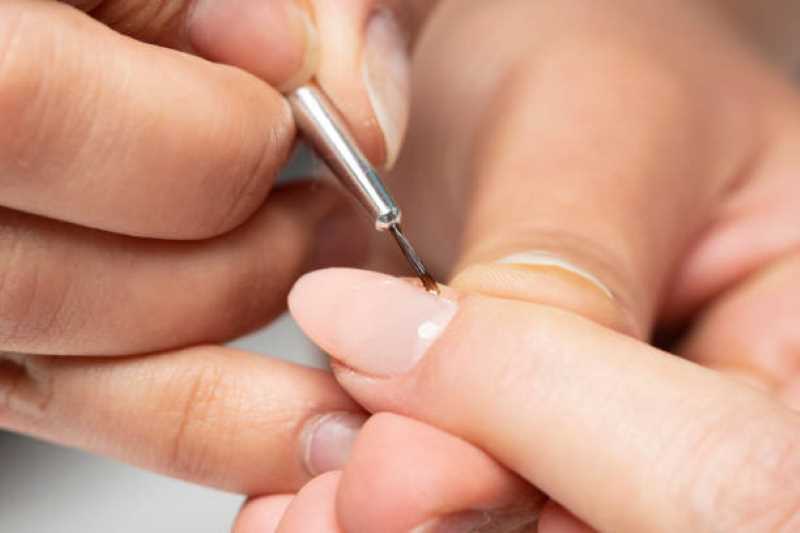If you’re looking to get your nails done, chances are you’ll come across the terms “acrylic” and “gel” nails. While both are popular options for nail enhancements, they differ in terms of their application, appearance, and durability. In this article, we’ll discuss the differences between acrylic and gel nails, as well as the advantages of each one.
Table of Contents
- Introduction
- What Are Acrylic Nails?
- How Are Acrylic Nails Applied?
- Pros and Cons of Acrylic Nails
- What Are Gel Nails?
- How Are Gel Nails Applied?
- Pros and Cons of Gel Nails
- Acrylic vs Gel Nails: Which One Should You Choose?
- Conclusion
- FAQs
1. Introduction
Acrylic and gel nails have become increasingly popular in recent years, and for good reason. They both offer a way to enhance the appearance of your natural nails, and they can also help to protect them. However, with so many options available, it can be difficult to know which one to choose. In this article, we’ll take a closer look at the differences between acrylic and gel nails, as well as the advantages of each one.
2. What Are Acrylic Nails?
Acrylic nails are made using a combination of liquid and powder. The liquid is typically made of a chemical called ethyl methacrylate (EMA), which is combined with a powder made of polymer and monomer. When these two substances are combined, they create a dough-like mixture that can be shaped into a nail.
3. How Are Acrylic Nails Applied?
Acrylic nails are applied by first prepping the natural nails by filing and buffing them. A primer is then applied to the nails to help the acrylic adhere better. Once the nails are prepped, the acrylic mixture is applied to the nails using a brush. The mixture is then allowed to dry and harden, which can take anywhere from a few minutes to half an hour.
4. Pros and Cons of Acrylic Nails
Pros:
- Durability: Acrylic nails are known for being extremely durable and long-lasting. They can withstand wear and tear better than other types of nail enhancements.
- Flexibility: Acrylic nails are relatively flexible, which means they’re less likely to break or chip.
- Affordability: Acrylic nails tend to be more affordable than other types of nail enhancements, making them a popular choice.
Cons:
- Harsh chemicals: Acrylic nails are made using harsh chemicals that can be harmful if inhaled or ingested. This is why it’s important to have them applied by a professional in a well-ventilated area.
- Thick appearance: Acrylic nails can sometimes look thick and unnatural, which is a turn-off for some people.
- Fumes: The fumes from the acrylic mixture can be strong and unpleasant, which can be a problem for those with respiratory issues.

5. What Are Gel Nails?
Gel nails are made using a gel-like substance that’s applied to the nails and then cured under a UV lamp. The gel is typically made of a combination of polymer and monomer, which creates a thick, sticky substance that can be shaped and molded.
6. How Are Gel Nails Applied?
Gel nails are applied by first prepping the natural nails in the same way as acrylic nails. A base coat is then applied to the nails, followed by several coats of the gel polish. Each coat is cured under a UV lamp for a few minutes before the next coat is applied. Once the final coat is applied, a top coat is added to seal and protect the nails.
7. Pros and Cons of Gel Nails
Pros:
- Natural appearance: Gel nails tend to have a more natural appearance compared to acrylic nails. They also come in a wider range of colors and finishes.
- Less harsh chemicals: Gel nails are made using less harsh chemicals compared to acrylic nails, making them a safer option for those with sensitivities.
- Quick drying time: Gel nails dry quickly under a UV lamp, which means you don’t have to wait as long for them to dry.
Cons:
- Durability: While gel nails are durable, they’re not as strong as acrylic nails. They can be more prone to chipping and breaking.
- Removal process: Gel nails require a special removal process that involves soaking the nails in acetone. This can be time-consuming and damaging to the nails if done improperly.
- Cost: Gel nails tend to be more expensive compared to acrylic nails.
8. Acrylic vs Gel Nails: Which One Should You Choose?
Ultimately, the choice between acrylic and gel nails comes down to personal preference and lifestyle. If you’re looking for a long-lasting and durable option, acrylic nails may be the way to go. However, if you’re looking for a more natural appearance and have sensitivities to harsh chemicals, gel nails may be a better choice.
It’s important to note that both acrylic and gel nails require proper maintenance and care to ensure they last as long as possible. This includes avoiding harsh chemicals, wearing gloves when doing household chores, and keeping the nails moisturized.
9. Conclusion
In conclusion, acrylic and gel nails are two popular options for nail enhancements. While they have their differences in terms of application, appearance, and durability, both offer a way to enhance the appearance of your natural nails. When choosing between acrylic and gel nails, it’s important to consider your personal preferences and lifestyle.
10. FAQs
- Can you remove acrylic or gel nails at home?
- While it is possible to remove acrylic or gel nails at home, it’s recommended to have them removed by a professional to avoid damaging your natural nails.
- How long do acrylic and gel nails typically last?
- Acrylic nails can last up to three weeks, while gel nails can last up to two weeks.
- Can you paint acrylic or gel nails with regular nail polish?
- Yes, you can paint acrylic or gel nails with regular nail polish. Just be sure to use a base coat and top coat to ensure it lasts.
- Are acrylic or gel nails bad for your natural nails?
- When applied and removed properly, acrylic and gel nails shouldn’t damage your natural nails. However, improper removal or frequent application can lead to damage.
- Can you apply acrylic or gel nails at home?
- While it is possible to apply acrylic or gel nails at home, it’s recommended to have them applied by a professional to ensure they’re applied correctly and safely.
Contact us to make an appointment.
